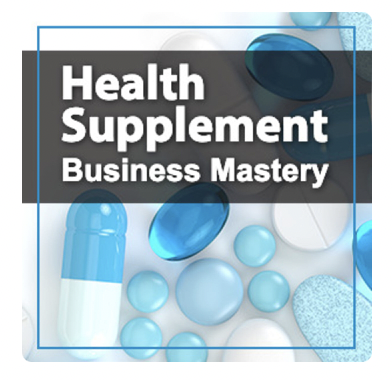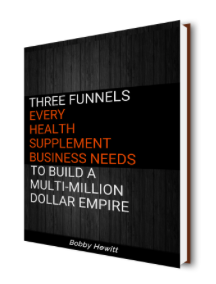Creating marketing offers, specifically for cold traffic, is very unique.
An offer that works on warm traffic, like your house email list, won’t work the same way on cold traffic.
A common way to tell if your offer has any legs at all with cold traffic is to first send the offer to your house email list. Just to get a bead on how it MIGHT perform to cold traffic.
It’s not a fair comparison though. As a general rule of thumb, offers always convert better to warm traffic than cold traffic. You can expect the same offer to convert to cold traffic at about half the rate compared to warm traffic.
To get an offer ready for a cold audience you’ll need to make MAJOR changes.
The offer itself accounts for a major part of what makes a cold traffic funnel work. Simply changing the offer, could mean the difference between success and failure.
But what’s the big difference?
Before understanding the differences between cold and warm offers, we first must understand…
What Makes a Good Marketing Offer?
A good offer is one that works.
Meaning the conversion rates are high enough to make the economics of the funnel such that the offers are maximizing your profitability.
But what actually goes into making the offer itself work?
All good offers start with the problem.
The problem can be expressed as a pain or a desire that the prospect has.
This is what is meant as a hungry crowd, a group of prospects that have a burning problem or desire that your solution can satisfy.
Our formula for a winning offer looks like this:
The Winning Marketing Offer Formula = P + H + B – F + ( I x U x G )
Where…
P = Problem
H = Hook
B = Believability
F = Friction
I = Incentive
U = Urgency
G = Guarantee
So it’s…
Winning Offer = Problem + Hook + Believability – Friction + (Incentive x Urgency x Guarantee)
Now, let’s look at each in detail for crafting a cold traffic offer…
Does Your Offer Solve a REAL Problem?
If you can find a market with an unmet problem, then selling is easy.
But most people either:
- Assume the problem isn’t a real one
- Don’t really understand the problem from the customers perspective
The question we use to answer both of those issues is…
When Do People Start Thinking About Their Problem?
Under what circumstances do people start thinking about their problem and what you sell? The answer to that question has a lot to do with the five levels of marketplace sophistication.
Knowing what level is of the market you’re targeting, will determine how you craft your marketing in general.
Every Fishing Pole Needs a Hook
Without a hook you can’t catch any fish.
The hook is the marketing angle that attracts your ideal prospect and opens their mind to the proposal of your offer.
Is Your Offer Believable?
Cold traffic is very skeptical. Both believability and proof is vital to making a health offer work to cold traffic.
There’s a lot of aspects to belief, but we think about it like this:
Belief = (Desire x Self Story) / Challenges
To learn more about our Belief formula, click here.
If you want to learn more about proof, here’s a video that walks you through 30 ways you can add proof to your offer.
But for now, let’s look at some questions around crafting the believability of an offer…
What do your prospects need to know about…
- The problem
- Your solution
What do your prospects need to know to feel confident…
- When buying from you?
- When buying your solution?
What do your prospects need to believe…
- About themselves in order to buy your solution?
- About you?
- About your product and or solution?
If you can answer these questions in your sales copy, you’re on your way to making cold traffic work.
Mind The Friction
Eliminating as much friction as possible is vital to making a cold offer work.
Friction is anything that creates a psychological block towards your offer. Removing the friction therefore, alleviates the risk of buying.
One way this can be done is by offering a strong guarantee, in terms of ease and length of time. A 90 day guarantee removes more friction than a 30 day guarantee, but a 365 day guarantee removes even more.
What’s My Incentive?
Adding incentive to the offer sweetens the pot.
The most basic incentive, is a percentage off discount or a BOGO offer, a buy one get one free.
But incentives can also take the form of bonus that complements the main product.
Bonuses can be anything you can imagine, from physical or digital books, audio interviews all the way to one-on-one coaching. You can attach virtually anything as an incentive to buy.
Is It Absolutely Urgent?
Ethical urgency is a great way to add a legitimate reason to the question “why should you buy this right now?”
One method of urgency is true legitimate scarcity. Not fabricated scarcity that you see so often in the direct response health space where a timer is added to a page that is completely meaningless.
True legitimate scarcity is baked into the product and the offer. You can buy sushi at the supermarket at 6pm at half off because if they don’t sell it, they have to throw it away because it won’t last. That’s true genuine scarcity.
Crafting An Offer With Your Best Buyer In Mind
The ultimate winning offer starts with an understanding of the buyer.
What DO they want?
What DON’T they want?
In short, the overall value of the offer should outweigh the perceived or real cost. One example of a perceived cost is the difficulty of returning the item.
Removing the real cost of your offer can be done by changing your offer from a hard offer to a soft offer.
This is often the key to making an offer truly work with cold traffic.
Discover the 3 funnels that can help your health supplement business succeed.

Listen to the Health Supplement Business Mastery Podcast for for dietary supplement entrepreneurs and marketers.




Thank u
it’s very useful information